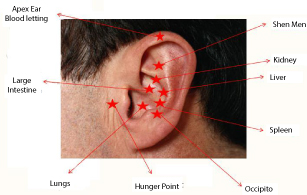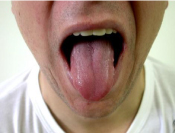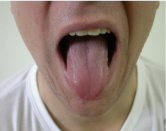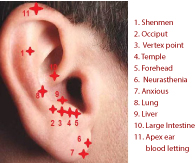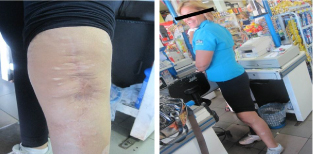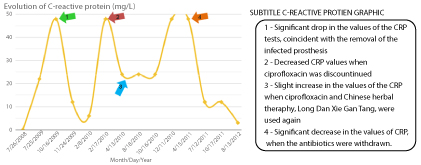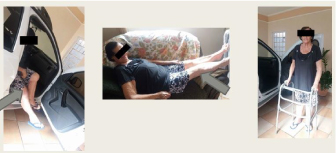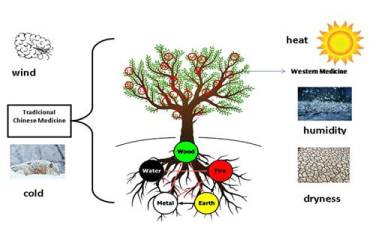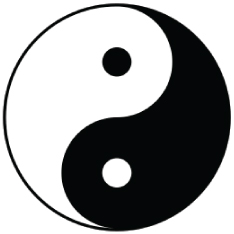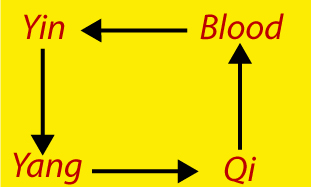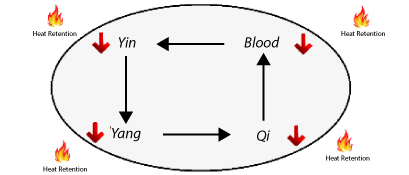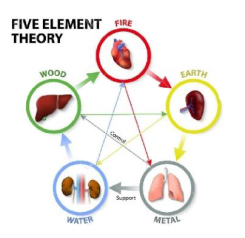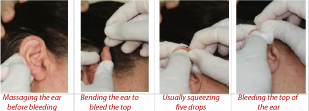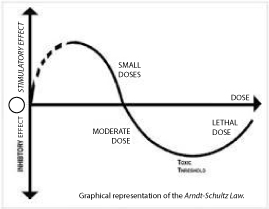Journal Name: Journal of Applied Microbiological Research
Article Type: Research
Received date: 05 June, 2019
Accepted date: 26 June, 2019
Published date: 03 July, 2019
Citation: Ling HW (2019) Is it Possible to Treat Community-Acquired and Nosocomial Infections with the Same Method, Without the Use of Antibiotics? J Appl Microb Res. Vol: 2 Issu: 2 (01-13).
Copyright: © 2019 Ling HW. This is an open-access article distributed under the terms of the Creative Commons Attribution License, which permits unrestricted use, distribution, and reproduction in any medium, provided the original author and source are credited.
Abstract
Introduction: According to Western Medicine, the difference between community-acquired and nosocomial infections is that community-acquired infections are defined as infections contracted outside of a health-care environment. Nosocomial infections, on the other hand, are those contracted after the patient’s admission and not incubated before hospitalization. In addition, the microorganisms potentially causing community infections are generally more sensitive to antimicrobials, whereas nosocomial infections are generally caused by multi-resistant bacteria. The purpose of this study is to demonstrate that community-acquired and nosocomial infections can be treated with the same method and without the administration of antibiotics. The method used was to include older medicine traditions such as Hippocratic theories and Traditional Chinese Medicine (TCM) in the treatment of three case studies of community-acquired infection and three cases studies of nosocomial infection. All six cases were treated with the same method, balancing Yin, Yang, Qi and Blood energies, using auricular acupuncture, removing Internal Heat with apex ear bloodletting, performing energy based Chinese dietary reorientation and avoiding exposure to external factors (Wind, Cold, Heat, Dryness and Dampness). Findings: All the six cases studied presented significant improvement with the treatment proposed, rebalancing Yin, Yang, Qi and Blood energies and taking out the Heat retention. In all the six cases, the use of antimicrobials was suspended. The energy imbalances were caused by the excessive use of anti-inflammatory, antimicrobials and having an incorrect diet that simulated the infection process. As stated by Hippocrates in the Hippocratic Corpus, the infections were generated by phlegm accumulation. Conclusion: In the six case studies described, the same method was used to treat community and nosocomial acquired infections, without the use of antibiotics. To achieve this result, it was necessary to individualize the treatment, seeing the patient as a whole, as stated by Hippocrates, correct all energy imbalances between Yin, Yang, Qi, Blood and take out Heat retention.
Keywords
Community-Acquired Infections, Nosocomial Infections, Antibiotics, Traditional Chinese Medicine, Acupuncture, Diet, Hippocrates.
Abstract
Introduction: According to Western Medicine, the difference between community-acquired and nosocomial infections is that community-acquired infections are defined as infections contracted outside of a health-care environment. Nosocomial infections, on the other hand, are those contracted after the patient’s admission and not incubated before hospitalization. In addition, the microorganisms potentially causing community infections are generally more sensitive to antimicrobials, whereas nosocomial infections are generally caused by multi-resistant bacteria. The purpose of this study is to demonstrate that community-acquired and nosocomial infections can be treated with the same method and without the administration of antibiotics. The method used was to include older medicine traditions such as Hippocratic theories and Traditional Chinese Medicine (TCM) in the treatment of three case studies of community-acquired infection and three cases studies of nosocomial infection. All six cases were treated with the same method, balancing Yin, Yang, Qi and Blood energies, using auricular acupuncture, removing Internal Heat with apex ear bloodletting, performing energy based Chinese dietary reorientation and avoiding exposure to external factors (Wind, Cold, Heat, Dryness and Dampness). Findings: All the six cases studied presented significant improvement with the treatment proposed, rebalancing Yin, Yang, Qi and Blood energies and taking out the Heat retention. In all the six cases, the use of antimicrobials was suspended. The energy imbalances were caused by the excessive use of anti-inflammatory, antimicrobials and having an incorrect diet that simulated the infection process. As stated by Hippocrates in the Hippocratic Corpus, the infections were generated by phlegm accumulation. Conclusion: In the six case studies described, the same method was used to treat community and nosocomial acquired infections, without the use of antibiotics. To achieve this result, it was necessary to individualize the treatment, seeing the patient as a whole, as stated by Hippocrates, correct all energy imbalances between Yin, Yang, Qi, Blood and take out Heat retention.
Keywords
Community-Acquired Infections, Nosocomial Infections, Antibiotics, Traditional Chinese Medicine, Acupuncture, Diet, Hippocrates.
Introduction
In the United States, antibiotic resistance causes 23.000 deaths per year [1-3]. According to different researchers such as Ventola and Zaman, this resistance is mainly associated with the antibiotics overuse crisis [2,3]. With the crisis, a new question was brought up: the necessity of new perspectives for treatment. In Thailand, for example, antibiotic resistance is responsible for 38.000 deaths per year. [1] According to Hippocrates (c. 460 – c. 370 BC), infectious diseases could be an imbalance of the four humors, leading to the formation of excessive phlegm [4]. Traditional Chinese Medicine also defines the symptoms of the infection process as imbalances in the internal energies or energy invasion by external factors, that are Cold, Heat, Dryness, Dampness and Wind.
The theoretical foundation of this study is based on a specific patient treated by the author. His treatment and its successful results are described in the following text.
In 2006, the author had a 70-year-old, male, Afrodescendent patient. The initial patient began acupuncture treatment for roughly six months and was using antiinflammatory drugs without any improvement.
According to Traditional Chinese Medicine (TCM), the patient was diagnosed with Kidney-Yang deficiency. This deficiency was diagnosed based on two major symptoms: feeling cold in the lower extremities of the body and experiencing pain in both legs.
The patient was subjected to 10 sessions of acupuncture, twice a week. The pain disappeared and one month after the last session, he returned to be reevaluated. During the reevaluation interview, the patient was questioned about any intercurrences after the 10 sessions performed. The patient said he went to his ophthalmologist to measure his eye pressure. The author did not know, but the patient was being treated for glaucoma over the past 40 years.
His eye pressure had never decreased with previous medical treatments, always appearing above 40 mm Hg. After acupuncture, the eye pressure decreased to 17mm Hg.
His ophthalmologist asked what he had done differently and the patient revealed that his only new procedure was acupuncture.
It is important to re-emphasize that the author was not aware of the patient’s Glaucoma at the beginning of the treatment.
The author’s hypothesis to explain the improvement in the patient is that the energy imbalances were responsible for the different symptoms and diseases (pain in the legs and high intraocular pressure) found in the patient. When the patient received treatment for his energy imbalances, he was treated at the root-level, and all the diseases and symptoms were successfully treated simultaneously.
This case report was first presented in Baltimore, Maryland, United States, in 2007, at an American Academy of Medical Acupuncture, and it was part of a 2012 study performed by the author at the University of São Paulo, in Ribeirão Preto, at the Ophthalmology Department, to demonstrate the treatment of energy imbalances can decrease intraocular pressure.
This case was also presented at the Society of Acupuncture Research Congress, which took place at Harvard University, Boston-United States, in 2015, for a study entitled Acupuncture Viewed Holistically Can Treat All the Patient’s Diseases Simultaneously.
After completion of the study in 2007, the author treated different symptoms and diseases for a variety of patients using the same reasoning as the basis. The different studies were developed by the author, and presented at other congresses around the world. Next, the author published several studies on Traditional Chinese Medicine and other traditions, in order to document how the management of energy imbalances can have a positive effect in the treatment of different pathologies and symptoms. The study compiled in this article aims to analyze six case studies, three cases of community-acquired infections and three cases of nosocomial acquired-infections; all treated with the same method by rebalancing the energy imbalances, presented by each patient.
Purpose
The main purpose of this study is to demonstrate the possibility of treating community-acquired and nosocomial infections with the same method, without the use of antibiotics.
In the follow-on study, three case reports of communityacquired infections and three case reports of nosocomial infections were evaluated. The author used the same method of treatment, correcting the energy imbalances as the initial studied patient who had high-intraocular pressure.
Methods and Results
The cases studied 1 to 3 refer to community-acquired infections, and case reports 4 to 6 refer to nosocomial acquired infections. The results are described together with the description of each case.
Besides the six cases studied, the study also included the literature review and other case studies and articles describing the use of Traditional Chinese Medicine. All articles used to constitute this study were Pubmed indexed articles. Also, articles regarding Chinese dietary counseling, typical Western Medicine treatments for infectious diseases and studies over integrative medicine. As all of these subjects appear as relevant in the analysis herein.
Case reports
Case report (1 – 16-year-old male, community-acquired furunculosis): This case was described in a previous article by the same author, entitled Can Recurrent Furunculosis Be Treated Without the Use of Antibiotics? published by Acta Scientific Journal, in September of 2018.
There, the author describes the case study of a male patient, 16-year-old, who presented recurrent furunculosis, and only had a successful treatment when treated with auricular acupuncture in conjunction with apex ear bloodletting, Chinese dietary counseling and the suspension of use of antibiotics [5]. Use of antibiotics was not improving his condition and was even causing negative side effects, such as stomach pain [5]. The auricular acupuncture points used are described in Figure 1.
Figure 1: Auricular acupuncture points: furunculosis.
Result of case 1 treatment: The patient obtained a significant improvement of the lesions with almost complete regression through only the use of Chinese dietary counselling, auricular acupuncture with apex ear bloodletting, and suspension of the use of all antibiotics.
Case report (2 – 34-year-old male, R.F., communityacquired furunculosis): The second case was also previously described in the same article, entitled Can Recurrent Furunculosis Be Treated Without the Use of Antibiotics? published by the Acta Scientific Journal, in September of 2018 [5].
The patient was a 34-year-old male who suffered from recurrent furunculosis and was subjected to treatment with antibiotics. The treatment was successful, but when the medications were withdrawn the symptoms would reappear. After six months of antibiotic intake and withdrawn, the subject decided to seek an alternative treatment.
His TCM diagnosis was a deficiency of Qi and Yin that was accompanied by Heat retention. The patient had large extremely painful red-sore hair follicles (sores that were 3 or 4 cm in diameter). He received treatment with auricular acupuncture along with apex ear bloodletting, herbal Chinese Medicine, and Chinese dietary nutritional therapy.
Another treatment used in the case of this patient was the tongue diagnosis described in Figures 2.1 and 2.2. The image compares the color of the patient’s tongue to analyze the existence of Heat retention. The first picture (2.1) was taken before the first session of acupuncture and shows the tongue of the patient as reddish. The second picture (2.2), was taken at the end of the first session and the tongue color changed to pink. The observed tongue results indicated that the subject’s Heat retention diminished after the acupuncture session in conjunction with apex ear bloodletting.
Figure 2.1: Red tongue – before acupuncture treatment.
Figure 2.2: Result - after one session of acupuncture.
Result of case 2 treatment: With the treatment identified, the patient obtained complete healing of the furunculosis lesions. The methods used were Chinese dietary counseling [6], Chinese herbal therapy and auricular acupuncture sessions (with mustard seeds) associated with apex ear bloodletting in order to take out the Heat retention. The patient stopped the intake of antibiotics and the treatment did not require any further use of these medications [5].
Case report (3 – 54-year-old male, community-acquired chronic sinusitis): L. F. O., a 54-year-old male, had chronic sinusitis that always occurred at the same time of the year during the Brazilian winter (usually in June and July). In 2006, during a severe attack, the patient took a variety of antibiotics with no improvement to his condition. Two weeks later he returned to his doctor with the symptoms:
- Pain behind the eyes and in the forehead center,
- air in the superior jawbone and in the teeth,
- An ear ache,
- Throat pain, Extreme fatigue, and
- A cough that was affecting his sleep.
Before the purchase of the new doctor’s prescribed medications, L.F.O sought different treatments and discovered acupuncture. He received two sessions of acupuncture per week and had progressive improvement over his symptoms during roughly a one-month period.
The patient also presented other symptoms, such as the feeling of cold in his extremities, which demonstrated a deficiency of Kidney-Yang.
The patient also received diet counseling. The primary diet change, based on TCM, was to avoid raw fruits and vegetables with the exception of apples, papaya and lemons. The patient was also directed to avoid dairy products and cold water. He started drinking water at natural temperature. Although the patient was advised to drink only lukewarm water, the patient was unable to comply. As a compromise, the patient avoided the drinking of cold water.
He was also instructed to avoid common exposure to external cold and wind, such as taking baths with the doors and windows open, walking barefoot, sleeping with wet hair and not to sleep naked.
Result of case 3 treatment: Following these instructions, the patient had complete improvement over his symptoms. However, the patient did have mild symptoms return years later. But these mild symptoms never compared to the severe symptoms he had before the treatment. He never had to undergo the sinusitis with antibiotics treatment again.
The acupuncture points used in his case were described in Figures 1 and 3. In order to treat the sinusitis in the acute phase of the process, the points described in Figure 3 were used. The acupoint was used to avoid the entrance of external pathogen factors. The symptoms of sinusitis were treated through the points 3, 4 and 5 in Figure 3.
Figure 3.1: Auricular Acupuncture Points Used for Sinusitis.
Figure 3.2: Result of Nosocomial Knee-Osteomyelitis treatment.
According to the teachings of Traditional Chinese Medicine, in an acute infection process caused by the invasion of external pathogens, the treatment is focused on the elimination of the external pathogens responsible for the condition. After the recovery from the initial acute phase, the doctor focused the treatment on recovery and fortification of the patient’s energy using the points described in Figure 1.
Case report (4 – 36-year-old male, nosocomial postorthopedic- surgery cellulitis): The case report of this patient, a 36-year-old male, who had nosocomial postorthopedic- surgery cellulitis, was previously described and published in the article entitled Could Postsurgical Nosocomial Cellulitis be Treated without the Use of Antibiotics? published by the Acta Scientific Journal in September 2018 [7].
There, the author describes the history of the patient, who had suffered an accident and had developed nosocomial post-orthopedic-surgery cellulitis (after a surgical operation to fix the tibia bone using an intramedullary nail) [7]. The patient underwent different treatments with antibiotics, without success. The possibility of having to take out the tibia intramedullary nail was considered, as the orthopedic doctors believed the nail could be infected.
Instead, the patient found an infectious disease doctor, with a TCM background, who performed treatment with Chinese dietary counselling, auricular acupuncture with mustard seeds, associated with apex ear bloodletting and homeopathic medications [7].
Result of case treatment: As described in the article, the patient’s condition began improving after the first acupuncture session; experiencing reduction in pain, swelling, edema and hyperemia. Gradually, in two weeks of treatment, the patient obtained complete normalization of the surgical scar with the disappearance of the edema, pain and hyperemia. The surgery recommended by the orthopedic surgeon to remove the surgical nail was not necessary with the TCM treatment performed [7].
Case report (5 – 23-year-old female, nosocomial postknee- surgery osteomyelitis): In the same article, entitled Can Hospital Osteomyelitis Be Treated without the Use of Antibiotics” at the International Journal of Infectious Diseases, in February of 2018. , the author describes the case of a 23-year-old woman, who suffered from postknee- surgery nosocomial osteomyelitis [8].127.0.0.1 web. whatsapp.com
This patient, named D.A.P, suffered a motorcycle accident in 2004 that resulted in a knee injury. She underwent an openbone reduction and developed nosocomial osteomyelitis a month after the surgery.
Different antibiotics were recommended and the patient took a variety of different drugs (Cephalothin and garamycin, vancomycin, imipenem, ciprofloxacin and many anti-inflammatory medications). She even underwent a 2nd surgery, but there was no relief from the pain, edema, and hyperemia [8].
Two years later she sought out advice from a TCM specialist, who treated her with Chinese dietary counselling, auricular acupuncture associated with apex ear bloodletting and Chinese herbal medicines, and the suspension from the intake of different antibiotics, anti-inflammatory, and other highly concentrated drugs.
Result of case 5 treatment: With the prescribed treatment of Chinese dietary counselling, auricular acupuncture, Chinese herbal medicines and the suspension from taking highly concentrated drugs (such as antibiotics and antiinflammatory medications); the patient lost 30 kg in two months and the secretion and knee pain disappeared [8].
The patient was able to go back to work and to a fully normal life, avoiding the possibility of amputation of the leg. Figure 3 shows the healing of the patient’s knee after the treatment.
*This image was present in the article “Can Hospital Osteomyelitis Be Treated Without the Use of Antibiotics” at the International Journal of Infectious Diseases, in February of 2018.
Case report (6–78-year-old female, nosocomial postsurgical knee-osteomyelitis): In the same publication of the Case 5, the Case 6 was described as well. This specific case is about a 78-year-old woman, who had osteoarthritis in both knees [8].
She underwent a very complicated recovery process, after the placement of prosthesis in both knees, which required the use of different antibiotic drugs and several admittances in two different hospitals.
It all started when the patient was 55 years old and was given a recommendation for prosthesis because of her osteoarthritis condition. The first prosthesis was placed in her left-knee at age 55 without any complications. Thirteen years later, the same doctor recommended the placement of a second prosthesis in her right-knee.
Unfortunately, the 2nd surgery scar became swollen and red, but anti-inflammatories and clexane controlled the inflammation. However, the infection returned three months later, and the patient was diagnosed with nosocomial osteomyelitis. She went to a different specialist that once again prescribed antibiotics to no avail.
The orthopedic doctor then recommended the patient to search for an infectious disease doctor, and the patient chose a doctor who had a background in Traditional Chinese Medicine. First, she received a prescription of Chinese Herbal therapy and auricular acupuncture associated with apex ear bloodletting.
The patient started to see some improvement, but was still feeling pain and swelling in her right knee two years after the surgery. The surgeon recommended the removal of the prosthesis, because it had become infected. The graph in Figure 4 shows the evolution of C-reactive protein after the removal of the infected prosthesis [8].
Figure 4: Evolution of C-reactive protein (CRP) in nosocomial osteomyelitis treatment.
Result of case 6 treatment: Although the patient now uses a walker because she cannot bend her right knee due to the removal of the prosthesis, she did not require any antibiotic or anti-inflammatories during the healing process, but rather through the use of only acupuncture associated with apex ear bloodletting and Chinese dietary counseling, the healing is now complete Figure 5.
Figure 5: Result of the treatment of patient with nosocomial osteomyelitis.
*This image is present in the article “Can Hospital Osteomyelitis Be Treated without the Use of
Antibiotics” at the International Journal of Infectious Diseases, in February of 2018.
Discussion
Antibiotics has changed the treatment and diagnosis of infectious diseases and has been responsible for a revolution in the health industry [1-3]. Over time, however, antibiotic overuse developed into a crisis. [1-3,9] Bacteria became more resistant and harder to inhibit or kill with the use of drugs. As a result, pharmaceutical companies started to develop more concentrated and stronger antibiotics. The unintended consequence is that this has led to even more resistant bacteria [9]. It can be assumed that with time, the newer highly concentrated antibiotics will again lose their effectiveness against these bacteria. This article is to propose a new option for treatment of nosocomial and community infections. It proposes the use of Arndt- Schultz Law reasoning, which recommends that overuse of all highly concentrated drugs is to be avoided and this includes the antibiotics and anti-inflammatory medications that are commonly used to treat the bacteria. In each case study provided herein, the patients had take out episodes of unsuccessful antibiotics use.
Then all were treated by balancing of Yin, Yang, Qi, Blood and removal of Heat retention, as well as receiving orientation regarding external factors and Chinese dietary counseling. Chinese dietary counseling was demonstrated by Hsiao-Chih Chang in the study: Understand the Food Cure With Chinese Yin-Yang Theory. [10] In this study, Chang demonstrates how food can be a therapy and promote cure. Other researchers explored the same theme, such as Qunli Wu, in the study: Food therapy and medical diet therapy of Traditional Chinese Medicine. [11] Qunli Wu quoted the following: “It treats through eating, that is, medicine can be used as food and food can be combined with medicine.” [WU, 2018]
TCM, although being an ancient medicine, is not well known by the majority of the Western medical community. Comprehension of TCM’s main principles are crucial to the understanding of treatment and diagnosis and this understanding correlates to the effectiveness of the treatment[12-14]. A majority of these concepts have already been discussed by the author in previous published articles [7,8,15].
Regarding infectious diseases, TCM diagnosis understands that these pathologies are imbalances caused by the invasion of external pathogenic factors and/or Yin, Yang, Qi and Blood imbalances that lead to Internal Heat formation [15,16]. Heat formation may be the cause of hyperemia and the yellow color of mucus in secretions in sites of surgical wound, lungs, eyes, etc. [15]. Having understood the importance of energy imbalances as documented in the cases studied, the author was able to treat different pathologies and infections using the same methodology. The methodology used was diet regulation, auricular acupuncture with apex ear bloodletting, and use of homeopathy medications when necessary. These methodologies have the main goal of correcting the energy imbalances without being harmful to the vital energy, in accordance with the Arndt-Schultz law that is further described in section 3.3 [17-19].
Hippocrates and infectious diseases
In the Hippocratic Corpus, Hippocrates analyzed and defined the concepts of infectious diseases; concepts already common back in his time. Hippocrates conceptualized disease as fluid dysregulation, according to the theory of Humorism [4].
His descriptions of diseases, therefore, were vague and could be attributed to different pathologies. Some physicians, such as Lagay, in an article entitled The Legacy of Humoral Medicine attested that the descriptions were vague because the focus of the treatment was not on the pathogen, but rather on the individual patient. [20]
According to Lagay, after the first half of the 20th century many physicians began to conclude that similar pathogens can affect different patients in different ways. [20] Hippocrates stated in the Hippocratic Corpus that pathologies act individually; and it is important to consider the patient as a whole, considering emotional and physical aspects to achieve a successful treatment. [4] During his studies, Hippocrates documented many different infectious diseases. According to him, fever and swelling were immune responses and could symbolize different infections. He was also the first physician to associate infectious diseases with inappropriate diets, such as, the consumption of raw and uncleaned vegetables. [20]
Even before today’s modern technology in medicine, Hippocrates understood and diagnosed many diseases, such as meningitis, cellulitis, osteitis, tonsillitis, peritonsillar abscess formation, puerperal infections and lower respiratory tract infections [20].
Also within the Hippocratic Corpus, the physiopathology that Hippocrates used to understand lower respiratory tract infections was described. According to Hippocrates, these infectious were caused by phlegm and the peculiar wheezing sound that they heard was being produced by the lungs. He associated fever and pleural pain with the disease as well [4].
The Hippocrates treatment for disease infection was through the diet of seeds, fruits, and honey. For the pain, he would use cathartics and natural expectorants with the goal of removing the excessive humor in the body. Those expectorants were done with herbs and aromatic plants, such as Galbanum and Artemisia [4, 17].
According to Lagay, the major contribution of Hippocrates was his understanding of disease being an individual matter that was not associated with supernatural causes and not linked to religion [20].
This article used the ideas of Hippocrates as a base, and as examples, the six case reports, to demonstrate the effectiveness of an individualized treatment, with a different focus. Instead of analyzing the pathology considering the pathogen (bacteria, fungus, viruses, etc), the patients were treated in the energy level, according to the Five Elements and Yin and Yang theories, considering the individual holistically. For these aim, three aspects were analyzed and treated: emotional factors, diet and pathogenic external factors (Wind, Cold, Heat, Dryness and Dampness).
Traditional Chinese medicine principles and reasoning: The energies and the body
In Medicine’s History, the reasoning of Hippocrates was gradually substituted by the model presented by Galen [20].
As previously stated by the author in past articles [5,8], the anatomic model proposed by Galen was the first model to separate the functions within the organs, affirming they would function independently and isolated [20]. This reasoning led to the model widely understood within the medical community today.
In previous articles, the author explained the metaphor of the tree presented in Figure 6 [7,15]. The metaphor establishes a parallel to the differences between the present Western-medicine and Traditional Chinese Medicine. As shown in the treatment of the six case reports, the author used the ancient knowledge of different medical perspectives (E.g. Traditional Chinese Medicine) with the main purpose of finding new possibilities of treatment [5-8]. Based on the studies performed after the case study of the patient with glaucoma, described in the introduction. All the cases were difficult to treat and none of the patients suffered significant improvement with antibiotics use alone [5,7].
Figure 6: Schematic drawing of the views of Western Medicine and Traditional Chinese Medicine.
In the previous articles, the author stated the different stages of a disease and the form diseases can be diagnosed when treating them at the root-level¹. In Table 1 - Progression of Health to Disease, the symptoms of the disease will only be consolidated enough to appear in medical exams at phases 4 and 5.
Table 1: Progression of Health to Disease.
| Progression of Health to Disease | ||||
|---|---|---|---|---|
| Organ | Exams | Energy Reserve | Symptom | |
| Phase 1 | Slowing Down of organ functions | Normal | Energy reserves normal | Without clinical symptoms |
| Phase 2 | Slowing Down of organ functions | Normal | Consumption of internal energy reserves | With symptoms in other organ |
| Phase 3 | Slowing Down of organ functions | Normal | Consumption of external energy reserves | With symptom in same organ |
| Phase 4 | Reversible Cellular Lesion | Little alteration | Consumption of blood reserves | Curable disease |
| Phase 5 | Irreversible Cellular Lesion | Excessive alteration | Metabolic exhaustion | Incurable disease |
¹ Root-level: Energy level, level of the root in the tree metaphor (HUANG, 2018).
A treatment that considers the root-level: Holistic treatment, treatment that considers different levels in the diagnosis. A diagnosis that considers patients’ energy.
In the metaphor of the tree found in Figure 6, the root has two symbols, the Five Elements and the Yin and Yang. These two symbols are the cornerstones of Traditional Chinese Medicine [15].
Many other scholars studied the Yin and Yang theory to comprehend better the perspective of Traditional Chinese Medicine and be able to use its knowledge in diagnosis and treatment in the present [10,11]. The previous mentioned study of Chang, entitled Understand the Food Cure with Chinese Yin-Yang Theory, proposes a relation between food, cure and therapy, using the Yin and Yang theory as a cornerstone [10].
Wu, in his study entitled Food therapy and medical diet therapy of Traditional Chinese Medicine, also used Yin and Yang theory as a basis to understand the effectiveness of the Chinese dietary therapy [11].
The balance of Yin and Yang energies inside the body will reflect the body’s state of health and when properly treated, patient’s pathologies tend to show improvement, as demonstrated by the six case studies found in this article. Figure 7 presents the Yin and Yang symbol, and Figure 8 is a graphic to clarify the relation between these energies. [10,11].
Figure 7: Yin and Yang.
Figure 8: Balance and Disharmony Between Yin and Yang.
Traditional Chinese Medicine also demonstrates the importance of two other energies. Blood and Qi. The energy of Blood is responsible for nourishment and vitalization of the body (Hair, sharp senses, coordinated motor skill and well-developed muscles). To work properly, Blood has to function in conjunction with Qi energy [16].
Qi energy can be understood as the force that keeps blood flowing in the body. There are two patters of disharmony of Qi energy: Deficient and stagnant Qi [16,17].
To be healthy, the body requires energy balance. The energies needed to function properly are Yin, Yang, Qi, and Blood, as illustrated in Figure 9 [15].
Figure 9: Yin, Yang, Qi and Blood.
By treating all energy imbalances, we treat all the patient’s symptoms concurrently. In this articles case, we treated community and nosocomial infections. Using this approach, we will be able to treat all diseases of all specialties at the same time, by the treatment of the root of the problems and not just the symptoms, even if the doctor is not aware of the patient’s symptom. (HUANG, 2015)
When there are imbalances in the Yin, Yang, Qi and Blood energies, the imbalances may create internal Heat retention, as illustrated in Figure 10. All energy deficiencies of the four energies can create Internal Heat. It can also be caused by an improper diet, such as constantly consuming fried foods, melted cheese, eggs, chocolate, coconut, honey, pepper, and alcoholic beverages [15].
Figure 10: Internal Heat Formation in the Yin, Yang, Qi and Blood relation.
Internal Heat can also be caused by excessive anger, because excessive anger leads to an increase of the Liver- Yang [15].
As depicted in Figure 10, a deficiency in one of the four elements can lead to Internal Heat formation. For example, a Yin deficiency will generate other imbalances in the other three elements. Any imbalance in any of the four energies can generate Internal Heat. Because Internal Heat may appear as hyperemia in a surgical site incision (swelling, yellow secretion, etc.), this could be mistaken for the symptoms of a bacterial infection [4, 15].
In her daily practice, the author uses the Yin, Yang Qi and Blood relationship together with the Five Elements Theory to diagnose and treat. The Five Elements Theory is depicted in Figure 11. The two cycles that form it, its history, and the understandings by this author about them are described in detail in her previous articles [7,15]. Figure 11 illustrates further the relationship of the Five Elements with the organs and the relation of the organs with themselves. This is opposite to what was proposed by Galen [20]. According to Galen, the organs function independently. Traditional Chinese Medicine theory of the Five Elements proposes a relation between the organs in the energy level. Water generates wood, wood generates fire, fire generates earth, earth generates metal and metal generates water. The Control Cycle prevent any element from becoming too powerful. One element is the “grandmother” of the other element. These two cycles are responsible for the healthy functioning of the organs of the Five Elements.
Figure 11: Five Elements Theory.
To diagnose energy imbalances, the patient completes the following questionnaire. It is important to ask about the items described in Table 2 [15].
Table 2: How to Diagnose Yin, Yang, Qi, Blood and Heat Retention Imbalances?
| Question | Does the patient have a daily bowel movement? | Does the patient have excessive sweating during day? | Does the patient feel cold in the extremities of the body? (Cold feet or hands) | Does the patient feel hot in the extremities? | Does the patient has dry mouth, bleeding gums, bad breath, acne and/or redness in the skin, abdominal pain, micro hematuria, or itching? |
| Meaning | The lack of daily bowel movements can mean Blood deficiency.* | This could be a symptom of Qi deficiency. | Commonly, this is a sign of Yang deficiency. | Commonly a sign of Yin deficiency. | Commonly this is a sign of Heat retention. |
* Blood deficiency can be understood as anemia in the energy level. As Blood deficiency may take years to appear in the laboratory exams, the patient with constipation and a normal complete blood count (CBC) can still be considered a patient with Blood deficiency, per TCM based on the symptoms he/she may present. |
|||||
Ancient traditions tools: How the patients were treated and why
After diagnosing the patients in the energy level, considering the elements exposed in the previous section, Yin, Yang, Qi and Blood energies and the Five Elements Theory, the author starts treatment with auricular acupuncture associated with apex ear bloodletting, Chinese dietary counseling and homeopathies use, in some specific cases.
The history of auricular acupuncture and apex ear bloodletting was described in previous articles by the author. [7,15]. The auricular points used in these patients’ cases were related to the Five Elements: Liver, Spleen, Lung, Kidney and Heart points, with the purpose of regulating the flow of energy Yin, Yang, Qi and Blood. The specific functions of these points were described in the author’s article “How do You Treat Low Back Pain in Your Practice? Part 2” [21].
In all patients, the auricular acupuncture sessions were performed with mustard seeds, applied with adhesive tape, associated with apex ear bloodletting. The apex ear bloodletting procedure was done with an insulin needle, squeezing the ear apex until take out five drops of blood. All patients were also oriented to let the points on the ear for seven days, squeezing the points three times a day minimum. After seven days, the patients have to take the points out before the next application, letting the ear resting between a section and the other and also cleaning it with alcohol [22].
All points were important, but according to the experience of the author and in the specific case of these six patients’ treatment; it was important to perform apex ear bloodletting in order to reduce internal Heat. According to Traditional Chinese Medicine, the Internal Heat could be generating the symptoms of infection present in the patients.
The apex ear bloodletting procedure is described in Figure 12. The auricular acupuncture points used appeared in the methods shown in Figure 1.
Figure 12: Apex Ear Bloodletting Procedure.
Acupuncture effectiveness has been studied by several researchers, such as Sandra Silvério-Lopes and Maria Paula Gonçalves da Mota, in the article entitled Acupuncture in Modulation of Immunity. Their studies state that “the studies compiled […] show that the acupuncture and electroacupuncture are effective in the modulation of immunity” (SIVÉRIO-LOPES and MOTA, 2013)
According to Essentials of Traditional Chinese Medicine of OuYang Bing [16], in Traditional Chinese Medicine different diseases may be treated with the same method because the same pathogenesis occurs in disease development [16].
Another important tool of the treatment is the Chinese dietary counseling. Hippocrates stated: “Make your food your medicine, and your medicine your food” [23].
A correct diet is significant to maintain the health of the body and even to cure diseases. Since there are foods that cause energy imbalances, there are also diets that can rebalance and restore the health of the body [6].
According to Qunli Wu’s article: Food Therapy and Medical Diet Therapy of Traditional Chinese Medicine, medical diet therapy aims to achieve the balance of Yin and Yang through the combination of nutrition and medicine. Traditional Chinese Medical diet therapy is conceived under a holistic theory based on Yin-Yang balancing [11].
According to Hsiao-Chin Chang, in the article Understand the Food Cure with Chinese Yin-Yang Theory [10], foods can have cold, neutral, warm and hot energies. In food therapy, each type of food remedy is chosen to combat the energy imbalance presented by the patient. For example, if the body is more Yin than Yang, eating foods with the opposite energy will be helpful for the patient’s health [10]. Foods that cause Spleen-pancreas deficiency are very common in Western eating habits, such as ingestion of cold water, raw foods, dairy products and excessive sugar. These foods can induce Spleen-pancreas deficiency that according to TCM may cause increase in the secretion, formation of edema, water retention in the body and hemorrhage episodes. All six case reports diet changes are summarized below to illustrate diet and effect on symptoms Table 3.
Table 3: Patients’ Diet and Effect on the Symptoms of Infectious Process.
| Previous Diet | Diet Recommended | Amount of Time performing diet. | Effect on the Symptoms | |
|---|---|---|---|---|
| Case Report 1- Community furunculosis. |
Excessive ingestion of dairy products, especially raw milk. Only cold water ingestion. |
To diminish Heat Retention: Avoidance of all dairy products, especially melted cheese, such as in pizza, lasagna and cheese bread. Avoidance of fried foods, eggs, chocolate, honey, coconut and all alcoholic beverages. Avoidance of cold water ingestion. |
20 days. | The patient presented significant improvement of his symptoms with the diet proposal in two weeks. Other TCM tools (acupuncture and apex ear bloodletting) were also used. |
| Case Report 2– Community furunculosis. |
Alcoholic beverages, fried and dairy products usual consumption. | To diminish Heat Retention: Avoidance of all hot-energy nourishment, according to TMC (fried foods, egg, chocolate, honey, coconut, alcoholic beverages, dairy products, especially if the cheese is melted). Avoidance of pepper, cinnamon, cloves and ginger. |
20 days | The patient presented significant improvement of his symptoms with the diet proposal in two weeks. Other TCM tools (acupuncture and apex ear bloodletting) were also used. |
| Case Report 3- Chronic Sinusitis. |
Excessive consumption of cold water, raw fruits and dairy products. | To avoid imbalance of Spleen-Pancreas, responsible for secretion production when imbalanced: Avoidance of raw fruits and vegetables, with exception of apples, papaya and lemons. Avoidance of dairy products and cold water. Avoidance of cold liquids consumption, preferring natural or lukewarm liquids, including water. |
30 days. | The patient had complete improvement of his symptoms after 30 days of diet. Other TCM tools (acupuncture and apex ear bloodletting) were also used |
| Case Report 4– Nosocomial Post-Surgical Cellulitis. |
Excessive consumption of beer and dairy products, such as chocolate and melted cheese. | To diminish Heat Retention: Avoidance of all dairy products, especially melted cheese, such as in pizza, lasagna and cheese bread. Avoidance of fried foods, eggs, chocolate, honey, coconut and all alcoholic beverages. To avoid formation of secretion caused by Spleen-Pancreas deficiency: Avoidance all cold beverages and raw food. |
30 days. | Normalization of the leg at the area of the previous surgery, without edema, pain, hyperemia and no discharge of purulent secretion, in about two weeks of treatment. |
| Case Report 5– Nosocomial Post-Surgical Osteomyelitis. | Excessive dairy products, sweets and raw food consumption. Only cold water ingestion. |
To reduce production of humidity and mucosity (caused by Spleen-Pancreas energy-deficiency): Avoidance of raw food, cold beverages, dairy products and sweets. To diminish Heat Retention: Avoidance of all dairy products, especially melted cheese, such as in pizza, lasagna and cheese bread. Avoidance of fried foods, eggs, chocolate, honey, coconut and all alcoholic beverages. |
30 days. | She lost 30 kilos in two months of treatment, the secretion disappeared and she didn’t suffer anymore knee pain. Other TCM tools (acupuncture and apex ear bloodletting) were also used. |
| Case Report 6– Nosocomial Post-Surgical Osteomyelitis. |
Excessive dairy products, sweets and raw food consumption. Only cold water ingestion. |
To reduce production of humidity and mucosity (caused by Spleen-Pancreas energy-deficiency): Avoidance of raw food, cold beverages, dairy products and sweets. To diminish Heat Retention: Avoidance of all dairy products, especially melted cheese, such as in pizza, lasagna and cheese bread. Avoidance of fried foods, eggs, chocolate, honey, coconut and all alcoholic beverages. |
Two years. | In the first 30 days she had reduction of the pain and swelling, and within two years of treatment she presented perfect healing of the surgical scar, without the use of antibiotics. Other TCM tools (acupuncture and apex ear bloodletting) were also used. |
The last tool used by the author was homeopathy, specifically in the Case Report 4. The homeopathy used was Sulphur 6CH, together with Staphylococcus 200CH. These medications were used together with diet, acupuncture and apex ear bloodletting. The patient was suffering from hyperemia and edema. The author used the highly diluted medications to substantiate her idea that the symptoms were being caused by an energy imbalance, and not by an infectious agent. The use of antibiotics and antiinflammatory was withdrawn and substituted by Sulphur 6CH and Staphylococcus 200CH. The patient responded very well to the use of highly diluted medications.
The use of highly diluted medications has been showed to boost immunity. According to some specific researchers such as Bellavite in the article entitled: Immunology and Homeopathy. 2. Cells of the Immune System and Inflammation ,
[…] the current scientific literature contains evidence and examples that may provide new insights improving our understanding of the principle of similarity and the action of small (or highly diluted) doses of medicines, particularly on the immune system and host defenses.” (BELLAVITE, 2005)
As demonstrated by the Arndt-Schultz law, stated in 1888, and previously identified by the author in different articles [7,15], highly concentrated medications can be harmful to health and, therefore, contribute to internal Heat build-up. The resulting health problems can appear to simulate an infectious disease process, with symptoms such as hyperemia or yellow secretion. The Arndt-Schultz law is demonstrated in Figure 13.
Figure 13: Arndt-Schultz Law.
When highly concentrated drugs are prescribed (such as antibiotics and anti-inflammatory medications), they may cause, in any case, the reduction of vital energy in all organs and meridians, generating more internal Heat formation, simulating signs and symptoms of infectious processes.
When choosing to use highly diluted medications, the author is using the same reasoning proposed by Arndt- Schultz law, strengthening patients’ energy [24].
In all six cases, no improvement was seen with strong antibiotic intake, even when used during long periods. Demonstrated in the various case reports, the causative agent of infection could come accompanied by an underlying cause associated with imbalances of internal energy. These imbalances mimic an infection process. With the use of strong antibiotics, the patients’ vital energy may decrease and the imbalance may produce symptoms similar to the infectious process.
Case similarities
- The symptoms of infectious process, present in cases studied were caused by Internal Heat formation or retention, according to TCM. Internal Heat can be caused by wrong eating habits, emotional issues (anger), excessive Yang energy of the Liver or lack of vital energy.
- In all cases, the use of highly concentrated drugs (antibiotics and anti-inflammatories) was not effective in the long-term. According to Arndt-Schultz law, these drugs weakened patients’ vital energy, causing or maintaining the various symptoms presented in the six case studies (recurrent furunculosis, chronic sinusitis, nosocomial post-surgical cellulitis, and nosocomial postsurgical osteomyelitis).
- All of the patients were on a strict diet to avoid foods that can form Internal Heat, such as dairy products (e especially for foods with cheese, if the cheese was melted: e.g. pizza, lasagna or cheese bread). In addition, they should avoid fried foods, eggs, chocolate, honey, coconut and all alcoholic beverages.
- All patients were to avoid cold beverages as well. Cold water according to TCM, causes a deficiency in the energy of Spleen-pancreas, which causes decreased absorption of the nutrients and leads to a lower blood production that causes the formation of Heat.
- In all cases, the diseases were associated with the retention of Heat in the Gallbladder meridian, caused by improper diet, excessive use of anti-inflammatory and antibiotics medicines, and exposure to external pathogenic factors, such as cold, that internalized in the body can cause Internal Heat.
- All patients were treated with auricular acupuncture to rebalance Yin, Yang, Qi and Blood energies, and apex ear bloodletting, which had the main goal of releasing Heat retention.
- All patients were treated individually, according to their energy imbalances presented at the first appointment. The symptoms were treated as well as the root of the problem, which was the energy imbalance. If the focus of the treatment was limited to the symptoms only (e.g. not treating the root of the problem), the results would likely be incomplete.
Conclusion
According to the six cases studied, it was possible to treat nosocomial and community infections with the same method.
To achieve this goal the physician has to understand the patient’s body and the patient’s illness from a different perspective. Western medicine point of view focuses on the pathogenic agent (bacteria, virus, fungus, etc), while the treatment performed in the six cases studied was focused on energy imbalances, the underlying cause of the infectious symptoms all patients were presenting.
In all the cases described the treatment was individualized. Each patient was treated according to their energy imbalances, with acupuncture, apex ear bloodletting, Chinese dietary counselling, and orientation about the influence of external factors in their condition.
According to the Hippocrates principles, diseases are a natural process and the physicians’ goal was to provide the patients with the body strength they needed for their own bodies to overcome the infectious process.
When seeing the patient in this way, it was possible to treat nosocomial and community infections without the use of antibiotics and using the same methods.
As stated by Einstein “We cannot solve our problems with the same thinking we used when we created them”. In the same way, the author believes that all symptoms were caused by improper diet and excessive consumption of highly concentrated medications (mainly antibiotics and anti-inflammatories). If the treatment with highly concentrated drugs was maintained, the symptoms would not disappear and probably would get worse. According to Einstein, it was necessary to use a new way of thinking to treat the six patients presented in this study.
More studies need to be done treating different infections (community or nosocomial) with the methods proposed in this study, with qualified physicians, in order to acquire more experience in this subject that still is completely new in the infectious diseases’ field.
Acknowledgment
*Special thanks to Ronald Howard Fong, for grammatical and structural revision!
Conflict of Interest
The author(s) declare(s) that there is no conflict of interest.
Funding
The article has no funding or sponsors.
There are no references
